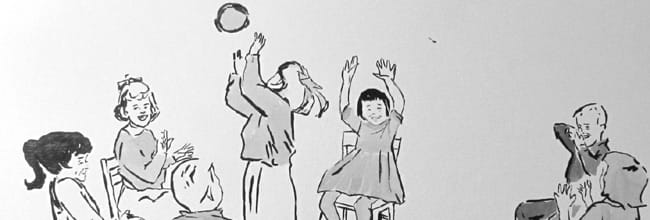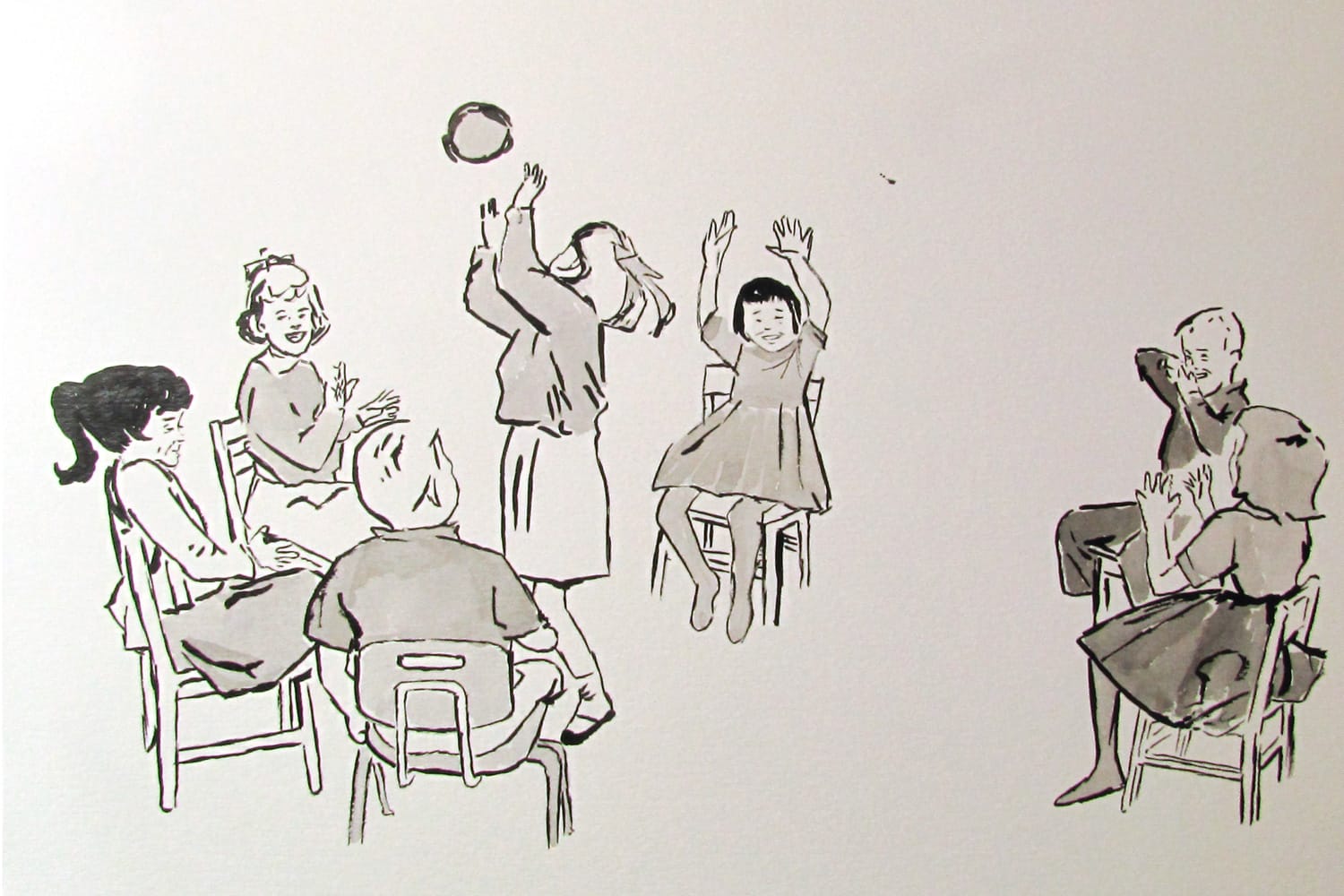DA INFORMAÇÃO À
CONTRA-INFORMAÇÃO
por Paula Braga

Arte não comunica. Se quisesse comunicar, seria informação e não arte. E informação, já nos advertiu Deleuze, é um conjunto de palavras de ordem: “Quando nos informam, nos dizem o que julgam que devemos crer. Em outros termos, informar é fazer circular uma palavra de ordem.”*
A obra de Marcelo Amorim recruta a informação para as fileiras do combate ao controle, ou em registro Deleuziano, transforma a informação em contra-informação. Como o artista convence a informação a abandonar o tom autoritário? Repetindo-a com a voz leve. Amorim não faz novas imagens, mas liberta aquelas que já existem do papel de conformadoras de comportamentos. Deixam de ser ditadoras ao serem transferidas para o contexto da arte e, surpresa, tornam-se transgressoras. Como o soldado que se junta aos rebeldes, a página do manual de brincadeiras — e desde quando brincar exige algum roteiro? — é recopiada para um papel enorme, e a legenda da imagem arremata a conversão: “aquele que está no centro da roda, se conseguir pegar a bola, deixará de ser o bobo.” A brincadeira aqui é então pegar a bola, evitar que as imagens nos façam correr de lá para cá como bobos.
A maior parte das imagens apropriadas por Marcelo Amorim são de livros didáticos dos anos 1970, especificamente de disciplinas que tentam domar o corpo, como educação sexual ou educação física.
Do manual audio-visual “Educação para o Amor”, que sincroniza imagens de adolescentes com uma locução sobre os mistérios da atração física, Amorim selecionou imagens dos casais se olhando, dos passeios de motocicleta, da alegria da vida em família, e simplesmente repetiu-as em tinta a óleo sobre tela, construindo em veladuras aguadas a mesma imagem em tons de cinza. Obteve a palavra de controle esmaecida, como se estivesse pintando uma lembrança, como se o referente fosse aquela imagem coberta por um véu branco, pescada no lago leitoso dos anos de formação dos padrões de comportamento. Trazendo essa imagem à tona, pegou a bola, deixou de ser o bobo.
As imagens apropriadas de manuais de educação física, mostrando fotos de grupos de homens atléticos ou meninos da escola primária se exercitando, também reproduzidas em tela com as veladuras esbranquiçadas, delineiam rostos e corpos apenas o suficiente para sugeri-los, e em sua baixa resolução cromática, que abole as cores para permanecer no cinza, lançam um campo dúbio, em que a informação moralizante pode justamente transformar-se em mensagem erótica.
O duplo sentido é a resistência à palavra de ordem. Amorim transcreve para sua obra o ensinamento do livro “O mundo da criança: brincando e aprendendo”: quem conseguir dar o pulo mais alto deu o pulo do gato e é o vencedor.
*Gilles Deleuze, O Ato de Criação, 1987.
Art does not communicate. If it wanted to communicate, it would be information and not art. And information, as Deleuze warned us, is a set of order-words: “When they inform us, they tell us what they judge we should believe. In other words, informing means circulating an order-word.”*
Marcelo Amorim’s work recruits information to the ranks of combat against control, or in Deleuzian terms, transforms the information into counter-information. How does the artist persuade the information to abandon the authoritarian tone? By repeating it in a soft voice. Amorim does not make new images, but frees those that already exist from the role of behaviour conformers. They cease to be dictators when transferred to an art setting and, to our surprise, become transgressors. Like the soldier who joins the rebels, the page from the games manual – and since when does playing require some procedure? – is recopied to a huge sheet of paper, and the subtitle on the image completes the conversion: “whoever is in the middle of the ring, when he gets the ball is no longer the piggy in the middle.” So the game here is to get the ball and not allow the images to make us run backwards and forwards like the piggy in the middle.
Most the images used by Marcelo Amorim are from 1970s textbooks, specifically for subjects that try to train the body, like sex education or physical education. From the audiovisual manual “Education for Love”, which combines images of teenagers with a commentary about the mysteries of physical attraction, Amorim selected pictures of couples looking at each other, on motorcycle trips, the joy of family life, and simply recreated them in oil paint on canvas, constructing the same image in grey-washed tones. He obtained the word of faded control, as if painting a memory, as if the object were that image covered by a white veil, fished from the milky lake of the years of establishing standards of behaviour. Bringing this image to the fore, he caught the ball and was no longer the piggy in the middle.
The images borrowed from physical education manuals, showing photos of groups of athletic men or primary school boys exercising, also reproduced on the canvas with the white washed paintings, outline faces and bodies just enough to suggest them, and the chromatic low resolution abolishes the colours to maintain the grey, launching a dubious field, where moralistic information could be transformed precisely into an erotic message.
The double meaning is the resistance to the order-word. To his work Amorim transcribes the teachings of the book “The world of the child: playing and learning”: whoever jumps the highest did the cat jump and is the winner!
*Gilles Deleuze, The Act of Creation, 1987.

